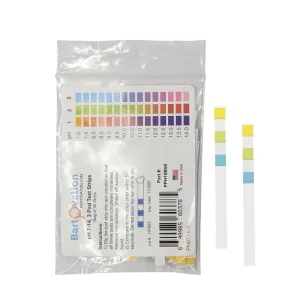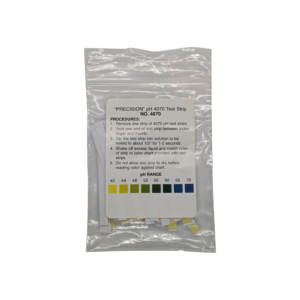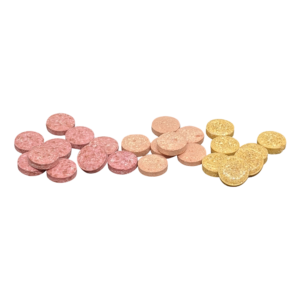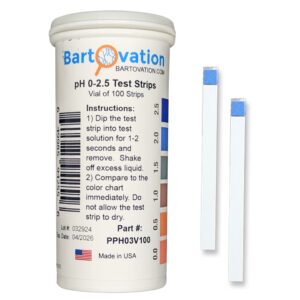FREQUENTLY ASKED QUESTIONS (FAQ)
What is a litmus test?
A litmus test is a simple experiment or method used to determine the acidity or alkalinity of a substance. It typically involves the use of litmus paper, which changes color when it comes in contact with acidic or basic solutions. A red color indicates acidity (pH < 7), while a blue color indicates alkalinity (pH > 7). Litmus paper is generally qualitative, meaning it will tell you if a solution is acidic or basic. It will not tell you the pH, to measure pH with more precision and quantitatively you need a quantitative pH test. The term “litmus test” is also used metaphorically to describe a quick, decisive way to judge something.
Where does the word “litmus” come from?
The word “litmus” comes from the Old Norse word *litmos*, which means “dye” or “color.” It refers to the dye derived from lichens, particularly those from the genus *Roccella*, which is used in litmus paper to indicate pH levels. This dye is responsible for the color change seen in litmus tests.
Where can you buy litmus paper?
Litmus paper can be purchased on our website or through our many distributors. On this page you can order large 8 x 10 inch sheets of our red litmus paper but we also offer the same format with blue litmus paper and in small precut strips. We have the capability to produce this paper in custom sized sheets, up to 20″ x 24″, if you have special requirements please contact us.
What color does red litmus paper turn in acids?
Red litmus paper stays red in acidic solutions.
What color does red litmus paper turn in basic solutions?
Red litmus paper turns blue in basic (alkaline) solutions.
What color does red litmus paper turn in neutral solutions?
Red litmus paper stays red in neutral solutions.
Only logged in customers who have purchased this product may leave a review.

![Red Litmus Test Paper 8x10 Inch Sheet [Pack of 24]](https://bartovation.com/wp-content/uploads/2022/05/IMG_2567.png)
![Red Litmus Test Paper 8x10 Inch Sheet [Pack of 24] - Image 2](https://bartovation.com/wp-content/uploads/2022/05/IMG_2568.png)
![Red Litmus Test Paper 8x10 Inch Sheet [Pack of 24] - Image 3](https://bartovation.com/wp-content/uploads/2022/05/IMG_2584.png)




Reviews
There are no reviews yet.